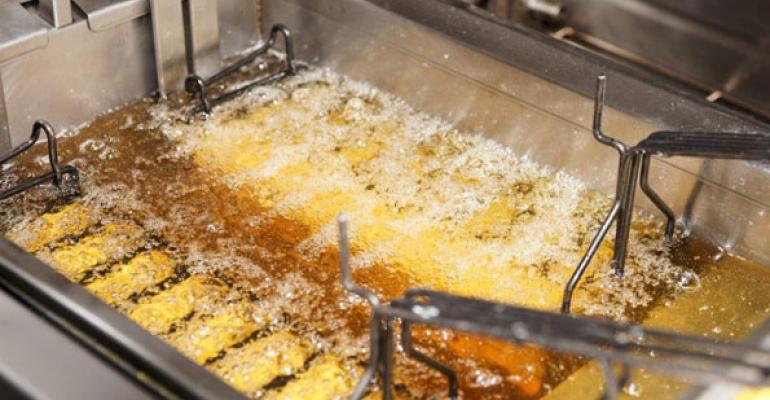Savvy foodservice operators whose business relies on the preparation of high-quality fried foods know that pursuing a sensible oil management program not only will yield more consistently flavorful menu items, but also will help save money in the long run.
And while different restaurants obviously have different needs, there are several fundamental recommendations that can help all operators get the most out of their frying oil.
Implementing a practical oil management policy starts with knowing what you want to do with fried foods and understanding the frying process. Deep frying is a cooking technique by which oil is heated in a piece of equipment commonly known as a fryer. The oil usually is heated to between 325 degrees Fahrenheit and 375 degrees Fahrenheit. Food items are submerged in the hot oil, which heats the water contained in the food. The water exits the food as steam, thereby allowing for the complete cooking of the food item.
The process of heating the oil combined with the dehydration of the food items results in oil breakdown due either to oxidation or hydrolysis. However, being able to control the oil breakdown — also known as “staying in the sweet spot” — helps to ensure that an operation achieves full value of the frying medium while yielding consistently high-quality deep-fried menu items.
Three basic tips to formulating a smart oil management policy are as follows:
1. Pair the frying oil or shortening with the items you plan to offer.
There are many edible oil options and your final choice should be driven by the foods you intend to fry — whether it is French fries or chicken or fish or something else. The best policy is to discuss your options with your oil supplier to arrive at a solution that works best for you.
Stratas Foods LLC features a number of oil and shortening options that include:
• Creamy liquid soybean oil, which has been ultra-purified to last longer in the fryer and provide excellent flavor. The ultra-purification process helps to remove impurities that cause the oil to darken, eliminate pro-oxidant metals and slow oxidation, which can hasten oil breakdown and create off-flavors.
• A creamy soybean and peanut oil blend, which offers longer fryer life and light peanut flavor. It also is less expensive than 100-percent peanut oil.
• 100-percent high oleic sunflower oil, which possesses a neutral flavor, long fry life and contains zero grams of trans fat per serving.
• A blend of high oleic sunflower and cottonseed oils, which has a light, clean flavor, excellent fry life and zero grams of trans fat per serving.
• 100-percent high oleic soybean oil, which contains zero grams of trans fat and provides for better fry life compared with traditional soybean or high-oleic canola oils.
2. Stay in the sweet spot!
The sweet spot refers to the point when frying oil is at its peak and perfectly seasoned to bring out the natural flavor and golden brown color operators are looking for in fried items. Operators can help prolong “the sweet spot” by following several basic recommendations:
• Check the temperature controls on your fryer frequently, and hold and handle oils at the lowest practical temperature — usually between 325 degrees Fahrenheit and 375 degrees Fahrenheit.
• Avoid overheating the oil. Frying at too high of a temperature is one of the primary mistakes operators make. Opt for the minimum frying temperature that still yields the food quality attributes you desire.
• Skim and filter the frying medium to eliminate food particles that darken the oil, contribute bitter flavors, slow down heat transfer, ruin the appearance of menu items and act as pro-oxidants that speed up the rate of oil degradation.
• Eliminate reactive metals — particularly copper, brass and iron — from all equipment that comes in contact with the oil. Common contact points include worn fry utensils or heating elements where the stainless steel has rubbed off; rust on the surface of fry baskets, utensils, filtration systems and the fry vat; and brass fixtures used to repair fryers.
• Perform regular maintenance and calibration on all equipment. Check pumps for air leaks.
3. “ROC” (Retire on Color) the oil to rock the food!
As oil oxidizes, its color darkens. Your oil supplier should be able to provide you with a color tube guide that can tell you whether your oil is over the hill or not. It's easy to train employees to use a color guide, entails no additional cost and works well in conjunction with other sensory evaluations — for example, how does the oil smell?
If you make the determination that the oil is too dark, the time has come to throw it away. At the end of the day, the decision to throw out old oil based on color will prove to be right more often than it is wrong.

